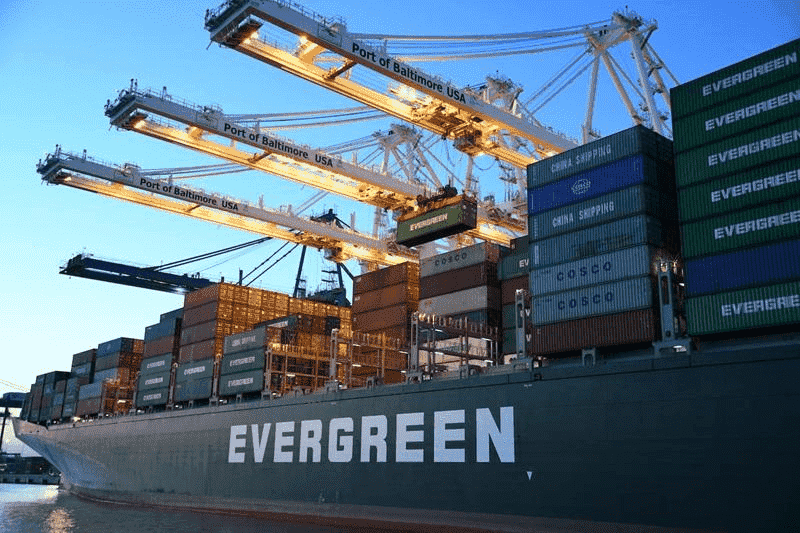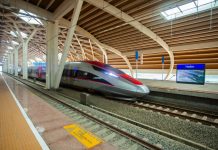Vietnam is a rising star in the global metal market, with a vibrant and diverse metal industry that offers a range of products and services. The country has a rich history and tradition of metalworking, and has been rapidly developing its metal sector in recent years, thanks to its economic growth, political stability, and strategic location.
However, sourcing metal from Vietnam is not without its challenges, as there are many factors and issues that need to be considered and addressed especially related finances. In this article, we will explore the opportunities and challenges of metal sourcing in Vietnam, and provide some tips and insights from key industry leaders and useful resources to check out if you want to learn how to navigate this dynamic and complex landscape.
The Metal Industry in Vietnam

Vietnam has a long and proud history of metalworking, dating back to the ancient times, when the Vietnamese people used bronze and iron to make weapons, tools, and artifacts. The country has also been influenced by various cultures and civilizations, such as China, India, France, and Japan, which have contributed to its metal heritage and diversity. Today, Vietnam is one of the leading metal producers and exporters in Southeast Asia, and a key player in the global metal market.
The metal industry in Vietnam consists of various segments and sub-sectors, such as mining, smelting, refining, processing, manufacturing, and trading. The industry produces and supplies a wide range of metals and metal products, such as steel, aluminum, copper, zinc, lead, nickel, tin, and gold. Some of the key metals sourced in Vietnam are:
- Steel: Steel is the most important and dominant metal in Vietnam, accounting for about 80% of the metal output and consumption. Vietnam is the largest steel producer and consumer in Southeast Asia, and the 18th largest in the world, with a capacity of over 20 million tons per year. Vietnam produces and consumes various types of steel, such as hot-rolled, cold-rolled, galvanized, coated, and stainless steel, and uses them for various applications, such as construction, infrastructure, automotive, machinery, and appliances.
- Aluminum: Aluminum is the second most important metal in Vietnam, accounting for about 10% of the metal output and consumption. Vietnam is the third largest aluminum producer and consumer in Southeast Asia, and the 31st largest in the world, with a capacity of over 1 million tons per year. Vietnam produces and consumes various types of aluminum, such as primary, secondary, and alloyed aluminum, and uses them for various applications, such as packaging, transportation, electrical, and consumer goods.
- Copper: Copper is the third most important metal in Vietnam, accounting for about 5% of the metal output and consumption. Vietnam is the fourth largest copper producer and consumer in Southeast Asia, and the 40th largest in the world, with a capacity of over 200,000 tons per year. Vietnam produces and consumes various types of copper, such as refined, cathode, and wire rod copper, and uses them for various applications, such as power, telecommunications, electronics, and industrial equipment.
The metal industry in Vietnam has been growing rapidly in recent years, thanks to several factors, such as:
- Economic growth and development: Vietnam has been one of the fastest-growing economies in the world, with an average annual GDP growth rate of over 6% in the past decade. The country has also been undergoing a process of industrialization, urbanization, and modernization, which has increased the demand and consumption of metals and metal products, especially for infrastructure, construction, and manufacturing sectors.
- Political stability and openness: Vietnam has been enjoying a stable and peaceful political environment, with a single-party socialist republic system that ensures continuity and stability of policies and regulations. The country has also been pursuing a policy of openness and integration, with a proactive and active participation in various regional and international organizations and agreements, such as the Association of Southeast Asian Nations (ASEAN), the Comprehensive and Progressive Agreement for Trans-Pacific Partnership (CPTPP), and the Regional Comprehensive Economic Partnership (RCEP), which have enhanced its trade and investment opportunities and cooperation with other countries and markets.
- Strategic location and resources: Vietnam has a strategic location and access to the South China Sea, which is one of the most important and busiest maritime routes in the world, connecting Asia, Europe, and Africa. The country also has abundant and diverse natural resources, such as coal, iron ore, bauxite, copper, zinc, and gold, which provide the raw materials and inputs for its metal industry.
Opportunities in Vietnam’s Metal Sourcing
- Cost advantages and competitive pricing: Vietnam has a low-cost and competitive metal industry, thanks to its low labor costs, low energy costs, low tax rates, and favorable exchange rates. The country also has a large and young population, with a median age of 32 years, which provides a plentiful and skilled workforce for the metal industry. Moreover, the country has a relatively low level of inflation, which helps to maintain the stability and predictability of prices and costs.
- Unique metal varieties and quality considerations: Vietnam has a unique and diverse metal industry, which offers a range of metal varieties and qualities that can suit different needs and preferences of buyers and customers. The country has a rich and varied metal heritage and culture, which reflects in its metal products and designs. The country also has a high level of innovation and creativity, which enables it to produce new and improved metal products and solutions. Furthermore, the country has a high level of quality awareness and improvement, which ensures that its metal products and services meet the standards and expectations of buyers and customers.
- Integration in global supply chains and export potential: Vietnam has a strong and dynamic metal industry, which is well-integrated and connected with the global metal market and supply chains. The country has a strategic location and access to the South China Sea, which facilitates its transportation and logistics of metal products and services. The country also has a favorable and open trade and investment policy, which supports its trade and cooperation with other countries and markets. The country also has a large and growing domestic market, which provides a huge and stable demand and consumption of metal products and services.
Financial Challenges in Sourcing Metals from Vietnam

Sourcing metal from Vietnam can also pose some challenges and difficulties for buyers and customers, such as:
- Navigating logistics and transportation issues: Vietnam has a complex and challenging logistics and transportation system, which can affect the efficiency and reliability of metal sourcing. The country has a large and diverse geography, with a long coastline, mountainous regions, and river deltas, which create natural barriers and bottlenecks for transportation and distribution. The country also has a limited and underdeveloped infrastructure, such as roads, railways, ports, and airports, which cause congestion and delays for transportation and delivery. Moreover, the country has a high level of bureaucracy and corruption, which can create obstacles and costs for logistics and customs procedures. These matters can cause financial impact on your sourcing project.
- Quality control and regulatory compliance: Vietnam has a variable and inconsistent quality and regulatory environment, which can affect the quality and safety of metal products and services. The country has a lack of clear and comprehensive standards and regulations for the metal industry, which can create confusion and uncertainty for buyers and customers. The country also has a weak and ineffective enforcement and monitoring system, which can lead to quality and compliance issues and risks. Furthermore, the country has a low level of transparency and accountability, which can result in fraud and corruption cases and disputes.
- Cultural and language barriers in business dealings: Vietnam has a distinct and different culture and language, which can affect the communication and negotiation with metal suppliers and manufacturers. The country has a collectivist and hierarchical culture, which values relationships, harmony, and respect, and avoids conflict, confrontation, and directness. The country also has a complex and tonal language, which has many dialects, accents, and expressions, and uses a different script and alphabet. These cultural and language differences can cause misunderstandings, misinterpretations, and miscommunications, and require patience, flexibility, and adaptation.
Expert Insights
To illustrate the opportunities and challenges of metal sourcing in Vietnam, we will present some expert insights from real-world examples of successful sourcing.
Expert Insight 1: Mr. Nguyen Van Thanh, Director of Vietnam Steel Association (VSA).
The Vietnam Steel Association (VSA) is the representative organization of the steel industry in Vietnam. He has over 20 years of experience and knowledge in the metal sector, and has been involved in various projects and initiatives to promote and develop the metal industry in Vietnam. He shared his views on the opportunities and challenges of metal sourcing in Vietnam, as follows:
- Opportunities: “Vietnam has a lot of potential and advantages for metal sourcing, such as its abundant and diverse natural resources, its low-cost and skilled labor force, its strategic location and access to the South China Sea, its favorable and open trade and investment policy, and its large and growing domestic market. These factors create a lot of opportunities for buyers and customers who want to source metal products from Vietnam, as they can enjoy high-quality, low-cost, and sustainable metal products and services, and access to a large and dynamic metal market and supply chain.”
- Challenges: “However, Vietnam also faces some challenges and difficulties in metal sourcing, such as its limited and underdeveloped infrastructure, its lack of clear and comprehensive standards and regulations, its weak and ineffective enforcement and monitoring system, its low level of transparency and accountability, and its distinct and different culture and language. These factors pose some risks and obstacles for buyers and customers who want to source metal products from Vietnam, as they may encounter problems and issues such as delays, quality issues, compliance issues, communication issues, and disputes.”
- Recommendations: “To overcome these challenges and difficulties, buyers and customers who want to source metal products from Vietnam need to do their due diligence and research, and verify the credibility and quality of the suppliers and manufacturers they find. They also need to use multiple sources and methods to cross-check and validate their information, and seek professional and expert advice and assistance when needed. They also need to be patient and flexible, and respect and adapt to the culture and language of Vietnam, and build trust and rapport with their suppliers and manufacturers.”
Expert Insight 2: Ms. Ashley Le, Sourcing Manager of Move To Asia.
Ms. Ashley Le is the Sourcing Manager of Move To Asia, which is a professional sourcing agent company that specializes in Made in Vietnam goods. She has over 5 years of experience and expertise in sourcing, and has helped many buyers and customers from different countries and industries to source metal products from Vietnam. She shared her views on the opportunities and challenges of metal sourcing in Vietnam, as follows:
- Opportunities: “Vietnam has a lot of opportunities and advantages for metal sourcing, such as its competitive and diversified metal industry, its unique and innovative metal products and designs, its high level of quality awareness and improvement, and its integration and cooperation with the global metal market and supply chains. These factors create a lot of opportunities for buyers and customers who want to source metal products from Vietnam, as they can find and work with the best metal suppliers and manufacturers in Vietnam, and get the best value for their money.”
- Challenges: “However, Vietnam also has some challenges and difficulties in metal sourcing, such as its complex and challenging logistics and transportation system, its variable and inconsistent quality and regulatory environment, its distinct and different culture and language, and its lack of transparency and accountability. These factors create some challenges and difficulties for buyers and customers who want to source metal products from Vietnam, as they may face problems and issues such as inefficiency, unreliability, quality issues, compliance issues, communication issues, and fraud and corruption cases.”
- Recommendations: “To overcome these challenges and difficulties, buyers and customers who want to source metal products from Vietnam need to use a sourcing agent, who can help them identify, vet, and negotiate with suitable suppliers and manufacturers in Vietnam, and provide them with quality control, inspection, and logistics services. As stated in this metal sourcing guide, sourcing agents can save them time, money, and hassle, and provide them with access, expertise, and support throughout the sourcing process. However, not all sourcing agents are created equal, and buyers and customers need to be careful when choosing one. They need to look for a sourcing agent who has a proven track record and reputation in the metal industry, a transparent and reasonable fee structure and service agreement, a clear and frequent communication and reporting system, and a high level of professionalism and integrity.”
Vietnam is a promising destination for metal sourcing, as it offers a range of opportunities and advantages, such as high-quality, low-cost, and sustainable metal products and services, unique metal varieties and designs, and integration and cooperation with the global metal market and supply chains. Sourcing metal from Vietnam can be challenging and difficult, due to various factors, such as transportation and logistics, quality and regulation, culture and language, and transparency and accountability.
Buyers and customers who are interested in sourcing metal products from Vietnam should be ready and informed about these factors, and follow the best practices and tips to deal with them. This way, they can successfully source metal products from Vietnam, and work with the best metal suppliers and manufacturers in the country. One of the channels that can help buyers and customers with sourcing metal products from Vietnam is attending to trade shows in Vietnam such as the Vietnam Expo, largest trade show for related products. This fair is a shortcut to meet up with metal suppliers, factories able to deliver finished goods and sourcing agencies such as Move To Asia, providing useful information regarding sourcing products or becoming the procurement agent for foreign clients.
All the photos in the article are provided by the company(s) mentioned in the article and are used with permission.




































































